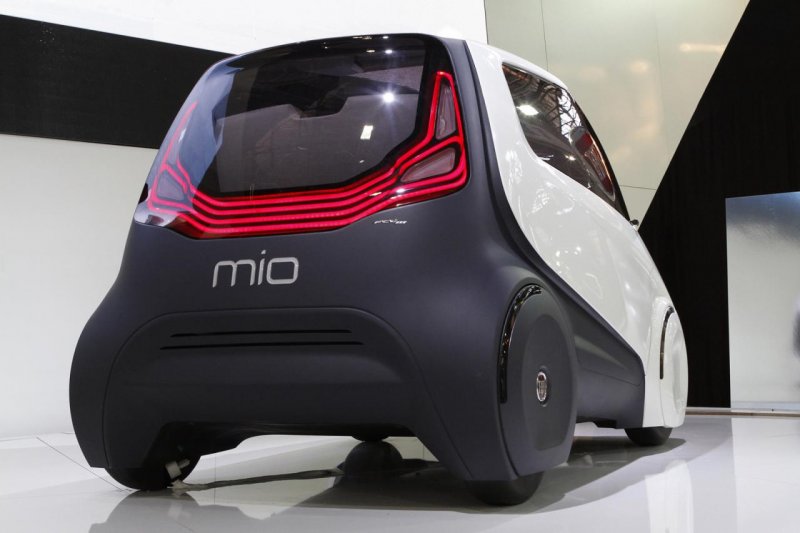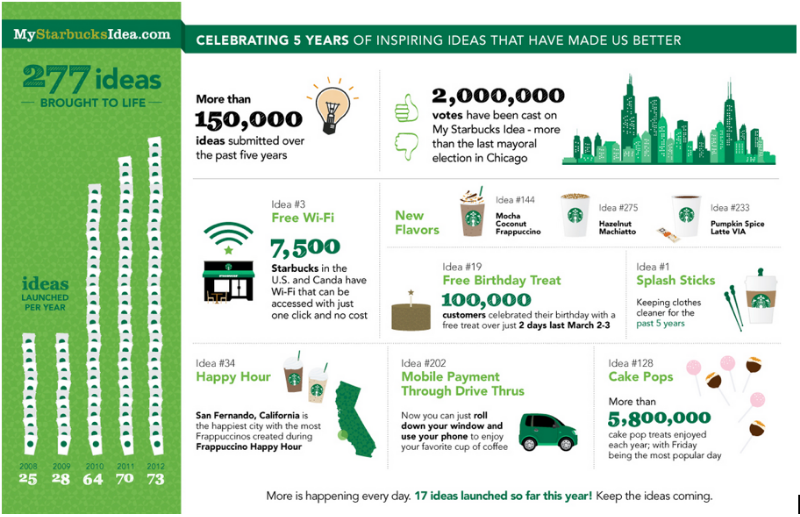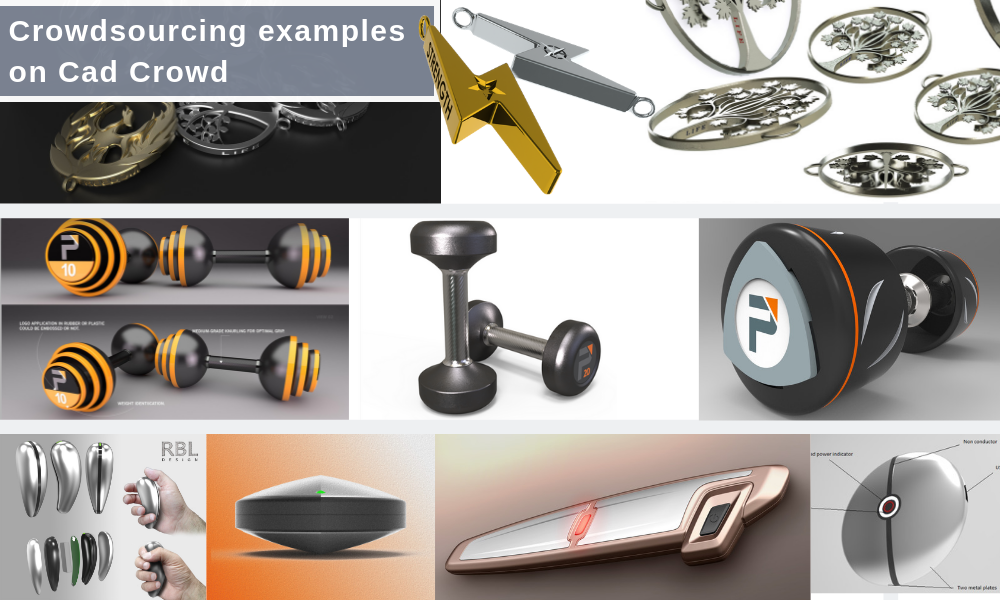Many of the best ideas were dreamt up and created by groups of people. As they say, there is power in numbers. The more brainpower working toward a problem, the better.
Many companies have adopted that principle and turned it into a way to generate new ideas and products. Crowdsourcing allows companies to create product strategies and ideas by interacting with their fans.
Crowdsourcing is referred to as a way of enlisting a large number of people, typically over the Internet, to obtain information and input into a task or project.
Over the last decade, it’s become a popular way of creating new products that are guaranteed to be a hit. After all, the fans have already told you they’re into it. But, this works better for some industries than others.
Let’s take a look at some of the industries that would benefit the most from crowdsourcing.
RELATED: 5 Advantages of Crowdsourcing Design & Product Development
Toys and Collectables
The toys and collectibles industry is quite volatile. Nowadays, kids are turning away from their Barbies and turning toward their tablets and video games. Young kids typically spend at least two hours staring at screens, and 42% of children 8 and younger own their own tablet.
With that said, toys still have a place in the world, although new brands have a more challenging time introducing their products to the world.
Crowdsourcing allows toy and game brands an opportunity to learn what their consumers want to use. Rather than releasing a product into the world with no information as to how it’ll perform, crowdsourced products usually see some success right away.
Lego is one company that has been crowdsourcing for a couple of years, beginning with Lego Ideas. The crowdsourcing program was tested in Japan in 2008, and a beta program entered North America in 2011.
Lego Ideas invites fans to submit both product ideas as well as enter their contests for the chance at winning exclusive prizes. The incentive to participate is huge, which is why Lego Ideas has been such a success. Some items that have successfully leaped from Ideas to store shelves include the widely successful Lego Minecraft series and a model of the Hayabusa Spacecraft.
Hasbro also recently launched a similar program called HASLAB. It’s their own platform made not only to crowdsource ideas but to crowdfund and get items that would never be created without the help of the consumer.
As of now, only one product has successfully been launched. Star War’s The Vintage Collection Jabba’s Sail Barge (The Khetanna) will be the first item to come from the program.
As you can see, many toy brands use crowdsourcing to launch successful products in the face of disinterested kids.
Fashion and Beauty
Another industry dipping its toes in crowdsourcing, the fashion and beauty industry is drastically changing.
Fashion, an industry that typically relies on the expertise of designers, is beginning to allow consumers to influence what ends up on store shelves. Brands use crowdsourcing to better keep up with trends and react to consumers’ needs more quickly.
It’s essentially allowing more designers to get their foot in the door. There is no longer a gatekeeper that dictates who gets their product – the consumer now decides it. All you need is an idea and the help of a CAD fashion design service.
Polyvore by Rebecca Minkoff, a fashion website that receives over 15 million views a month, launched a contest in 2010, allowing visitors to design a purse. The winning pick, decided on by users, got their bag named after them and saw it on store shelves.
Glossier, a killer beauty brand, began crowdsourcing in 2015. Seeing the overwhelming amount of new products, CEO Emily Weiss decided to go about product creation differently – she asked the crowd.
She asked the community what they wanted to see in a face wash, and that post turned into the best-selling Milky Jelly Cleanser. They later crowdsourced a moisturizer that became a best-seller (to no one’s surprise).
Vehicles and Travel
In an industry that emphasizes comfort and convenience, crowdsourcing is king. Many vehicles have been crowdsourced into existence, including the Fiat Mio. In 2009, Fiat launched a website asking consumers what they’d like to see in a “car of the future.”
The Fiat Mio was the result and is essentially the world’s first crowdsourced car. Ultimately, the car’s specifications were submitted under Creative Commons licenses and became available for everyone to use. Any automotive design company can take the specifications and create a similar model.

While the car wasn’t as big of a success as Fiat had hoped, it did generate a ton of buzz and positive press. That registers as a success in my book.
Crowdsourcing can also be used to identify features that consumers would like to see in their next car. Things like integrated maps and heated seats are only some innovations that could come from crowdsourcing.
And it doesn’t stop there. The travel industry also utilizes crowdsourcing. Airbus took inspiration from fans’ comments on social media to design their 2016 cabin concept, Airspace.
According to Dr. Kiran Rao, executive vice president of Strategy and Marketing at Airbus:
“In the past, we just created a great product, and we allowed the airlines to customize it and to do what they want to do on the airplane. Today we’re reaching out to the passengers who fly on the aircraft… they are making big decisions based on product, and the experience that they have. So, we listen to our customers and our customers’ customers.”
Sports Team
While asking fans for advice on coaching and other intricacies of sports isn’t wise, many sports teams have turned to crowdsourcing for other aspects.
Many teams turn to crowdsourcing to get fans’ input on uniform and logo design. The Kalamazoo Wings, a minor league hockey team, routinely holds jersey design contests. It’s a great way to get fans more invested in the team and the sport.
The Tampa Bay Rays also turned to crowdsourcing, but not for their jerseys. They wanted fans’ ideas and opinions on the new stadium they were building, including its features and future location. The campaign is still running (although it’s in its later stages), so you can still hear your opinion.
Other sports teams should consider crowdsourcing. A perfectly designed sports stadium will create an engaging fan experience. It’s an excellent way to solve the issues in more traditional stadiums and keep fans buying tickets.
Software
What may be the original crowdsourced product software wouldn’t be the same without user input. Many programs are open-sourced, meaning the public can alter the source code and drastically affect change.
Users can iron out bugs and fix glitches on their own terms, making the product better for themselves and everyone. Blender and Tinkercad, programs used by drafting services, are examples of open-source 3D modeling and CAD programs that wouldn’t be as successful today without the users.
Because software constantly changes, bringing along updates, features, and tweaks, crowdsourcing is crucial. Developers may be unable to offer as many improvements were their software not crowdsourced.
Some other widely used open-source software include VLC Media Player, GIMP, and Mozilla Firefox.
Marketing and Public Relations
In an industry that influences and shapes people’s opinions and actions, crowdsourcing is a holy grail. It’s an effective way of honing marketing tactics and ensuring your efforts are targeted.
Methods that marketing teams use to research their audiences, like surveys and focus groups, are key examples of crowdsourcing. It allows marketing agencies to generate feedback that can be used to shape their marketing efforts.
Another prime example of crowdsourcing in the marketing industry is using user reviews and testimonials to bolster a product or service. We know that online reviews have a huge effect on customers. The brand with no reviews is the brand about to fail, after all.
Because reviews come from neutral third parties, they’re usually seen as trustworthy and are highly influential in getting customers to try your brand.
Food and Beverage
Some of the most innovative crowdsourced ideas have come from the food and beverage industry, and it’s no surprise. Everyone interacts with food and beverage products, giving these companies more of a crowd to source from.
Nescafe is one example of crowdsourcing done right. In the face of declining instant coffee sales, Nescafe partnered with eÿeka to reintroduce instant coffee to the world. Over three weeks, over 138 ideas were proposed, and NESTLÉ went on to test the winning concepts in 6 markets.
Without crowdsourcing, the instant coffee stick would not have been born.
Unilever also utilizes crowdsourcing to better their products and marketing efforts. They used video content made by consumers to promote brands like Vaseline, Knorr, Ben & Jerry’s, and Lipton, effectively strengthening their marketing campaigns.
Ben & Jerry’s is notorious for crowdsourcing flavor ideas and turning them into real products. Their “Do The World A Favor” campaign allowed them to generate over 100,000 flavor ideas for a low cost. Because of that success, they launched many other crowdsourced campaigns.
Most Other Consumer Goods
While the industries I listed above are excellent examples, the truth is that most businesses could benefit from crowdsourcing in some form. This is why consumer product design firms often use the method.
Because businesses rely on satisfying a customer’s need, having that customer influence the product or service is a surefire way to do that. To ensure your product or service is desirable, all you have to do is ask the crowd.
Starbucks is another fantastic example of a crowdsourcing success story. In 2008, Starbucks launched My Starbucks Idea, a crowdsourcing platform allowing consumers to share their ideas regarding the brand, whether a drink idea or commentary on management.

Over the first five years of the program, the program generated over 150,000 ideas, and 2,000,000 votes were cast. Of those ideas, 277 were fully realized, and some have become staples of the brand itself. Without the program, there would be no cake pops or splash sticks.
Through the crowdsourcing program, Starbucks is sourcing unique ideas that are the key to its success – for free. Customers feel like they have some control over the brand and are more likely to become and stay loyal customers.
They’ve gamified the process with a voting system and Leaderboard that helps keep votes coming back. If your company is looking to crowdsource, Starbucks is a good model.
Crowdsourcing New Product Design on Cad Crowd
If you happen to be designing a new product and are interested in crowdsourcing, Cad Crowd can help with our CAD design contest service. We can help you host a contest, sourcing designs from our thousands of vetted, qualified freelancers. You get to pick the best one. Contact us for a free quote.

